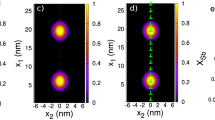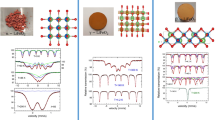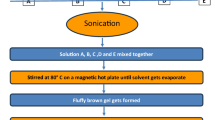Abstract
This paper is a continuation of [1] and is devoted to determining the type of defects arising in different (α, β, and γ) modifications of crystal lattice of doped zirconia (solid solution of doping oxide MOi in zirconia-Zr(M)O2−x ), as well as to finding the dependence of the number of defects on temperature T and on partial pressure of oxygen p(O2) in the ambient medium. Expressions are obtained for the sought dependences. It is assumed that a partial disintegration of the crystal lattice occurs in the high-temperature region, with the released neutral atoms (at low values of p(O2)) or cations (at high values of p(O2)) going to the interstice; doping elements are involved in such a transition along with zirconium.
Similar content being viewed by others
References
Pakhomov, E.P., Teplofiz. Vys. Temp., 2005, vol. 43, no. 4, p. 556 (High Temp. (Engl. transl.), vol. 43, no. 4, p. 554).
Toropov, N.A., Barzakovskii, V.P., Lapin, V.V., and Kurtseva, N.N., Diagrammy sostoyanii silikatnykh system (Diagrams of State of Silicate Systems), Leningrad: Nauka, 1969.
Author information
Authors and Affiliations
Additional information
__________
Translated from Teplofizika Vysokikh Temperatur, Vol. 44, No. 6, 2006, pp. 861–867.
Original Russian Text Copyright © 2006 by E. P. Pakhomov.
Rights and permissions
About this article
Cite this article
Pakhomov, E.P. Nonstoichiometry of doped zirconia. High Temp 44, 852–860 (2006). https://doi.org/10.1007/s10740-006-0103-2
Received:
Issue Date:
DOI: https://doi.org/10.1007/s10740-006-0103-2




